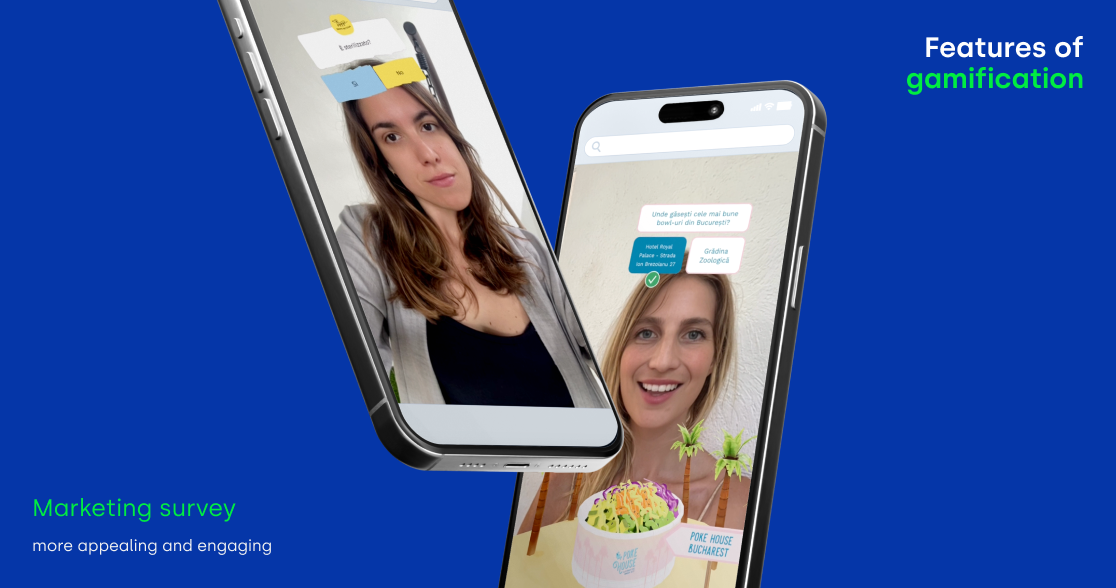
Let’s face it: marketing surveys can be boring. And, unfortunately, there aren’t many ways to make them more appealing or engaging. However, our users reported a 57% increase in participation and more than doubled the completion rate in the survey, taking advantage of gamification. For these reasons, an AR gamification experience is one of the best ways to make your next marketing survey more captivating, playful, and effective.
The rise of the concept of gamification can be traced back to 2002, when it was launched by Nick Pelling.
But what does gamification mean? It means harnessing and applying the game thinking and game mechanics to non-game contexts.
The main reasons that motivate players are:
This approach has been used successfully by many companies as a way to increase user engagement with their brands. According to research by Gartner, 85% of users find gamified content entertaining and engaging.
This is a no-brainer. The only reason your users might want to join a gamified marketing survey without rewards would be to make it a real game that entertains and amuses. The reality is that in 99% of cases, brands fail to create real, entertaining games. We need to reward the time invested by users in our activities.
In Latin, we say “Do ut des.” Literally, “I give [something] to you, and you [give] something else to me.” Reciprocity in these contexts is crucial.
This can be anything from a discount or coupon code for their next purchase to a freebie like an e-book or t-shirt. You can also offer point systems where users earn points based on how often they complete surveys and redeem them for rewards.
Rankings can be a powerful tool in gamification because they provide a concrete, measurable goal to work towards. Players can try to climb the rankings and improve their position.
They create healthy competition and a sense of accomplishment, especially when players achieve a good ranking. Additionally, they can be customized based on different criteria such as points earned, time spent playing, etc.
People often join surveys only to get feedback on how other participants feel about the topic. “Let’s see how many think like me.”
Sharing the results of a survey can increase engagement and encourage further participation by providing context for individual views. It fosters discussion, increases transparency, and helps to build trust.
Emerging technologies like AI, chatbots, and voice assistants can make surveys more interactive, but Augmented Reality (AR) takes this to the next level.
Augmented reality immersive experiences ensure that users are more likely to share the experience 4x more than a standard multiple-choice survey.
For instance, after a stay in a hotel, a Quiz Face-filter could ask the guest how their stay was, with closed questions that make the experience fun and interactive.
AR surveys engage users through immersive experiences, increasing the likelihood of survey completion.
Aryel is a powerful Augmented Reality web-based platform that allows you to create AR experiences in a snap, thanks to a ton of ready-to-use assets and templates.
One of the best features for marketers is the data collection and metric analysis—Aryel allows marketers to gather insights from both off- and online marketing campaigns and analyze them in a dedicated dashboard.
Start to gamify your marketing with Augmented Reality! 🔥